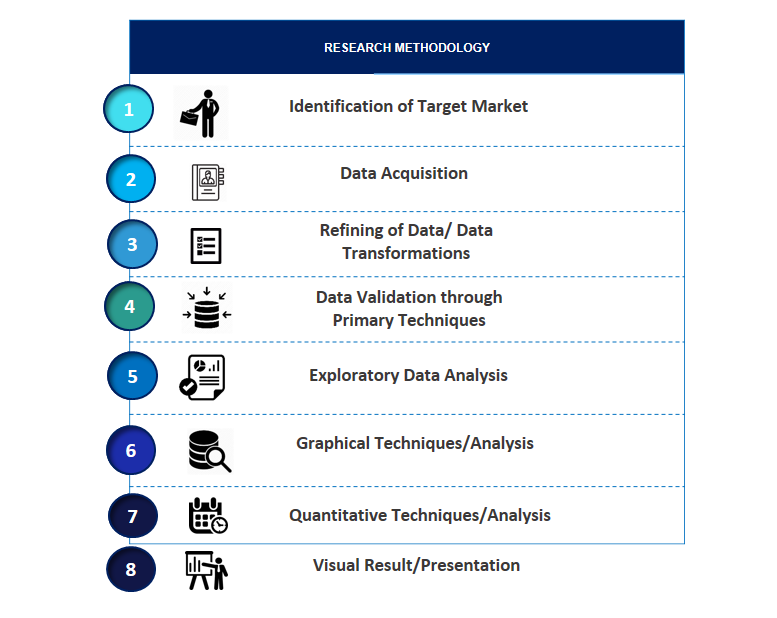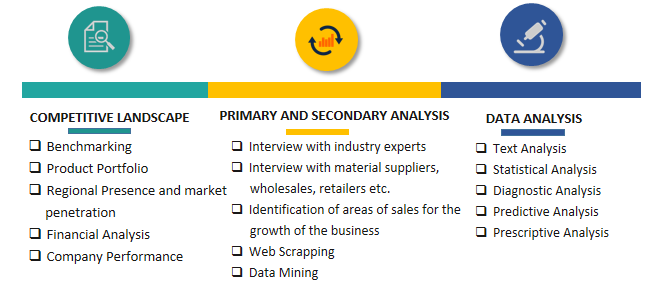Europe Seafood Market Introduction and Overview
According to SPER Market Research, the Europe Seafood Market is estimated to reach USD 74.18 billion by 2033 with a CAGR of 1.03%.
The report includes an in-depth analysis of the Europe Seafood Market, including market size and trends, product mix, distribution channels, and supplier analysis. Fish and shellfish are only two examples of the wide variety of marine life that is collected for human consumption as seafood. For numerous civilizations across the globe, it provides a substantial amount of protein and vital nutrients. Fish comes in a variety of forms, from saltwater favorites like tuna, cod, and halibut to freshwater favorites like salmon and trout. Crustaceans such as shrimp, crab, and lobster, together with mollusks like oysters, clams, and mussels, are considered shellfish. From straightforward grilled fish to intricate sushi dishes, seafood offers a wide range of culinary options.
- December 2022: Mondo Mar Marine Foods, a Danish whitefish supplier specializing in cod and saithe, was acquired by Leroy Seafood Denmark.
- March 2023: Three contracts worth over USD 6 billion in High-Voltage Direct Current (HVDC) were signed by GE Renewable Energy's Grid Solutions unit. For TenneT's ground-breaking 2GW Program in the Netherlands, these contracts were given out as a part of a consortium that included Sembcorp Marine.
- June 2022: saw the signing of a new cooperation agreement between Espersen and Royal Greenland, allowing for the sustained strong expansion of the seafood category based on Koszalin production.
Market Opportunities and Challenges
Opportunities: The growing health consciousness of customers is one of the main factors propelling the seafood market in Europe. The high nutritional content of seafood, which includes lean protein, vitamins, minerals, and omega-3 fatty acids, is well known. The demand for seafood products as a component of a balanced diet is rising as people become more aware of the health advantages linked to seafood eating. Additionally, fish makes up the majority of the seafood eaten in the area, with tuna, cod, salmon, and Alaska pollock among the most popular kinds. As Asian restaurants proliferate in the region, tuna is expected to become the most consumed fish species in Europe.
Challenges: The consumption of plant-based foods has increased as a result of the rise in veganism. This has made it possible for producers of well-established fish markets to concentrate more on introducing plant-based meat substitutes, which has hurt their market share. Furthermore, the popularity of vegan or plant-based meat is growing as a result of celebrities beginning to support and advocate for veganism. Plant-based diets have been more popular in recent years, with consumers showing interest in plant-based foods everywhere in the world. Furthermore, the market for fish and other products was negatively impacted by the rise in flexitarian consumers, who are more likely to favor vegetables, legumes, whole grains, and nuts than meat on occasion. Throughout the projected period, these factors are anticipated to impede market expansion.
Market Competitive Landscape
The top five corporations take up 9.53% of the fragmented European seafood market. Thai Union Group PC, Grieg Seafood ASA, Mowi ASA, Bolton Group SRL, and Austevoll Seafood ASA are the leading companies in this market.
Scope of the Report:
| Report Metric | Details |
| Market size available for years | 2020-2033 |
| Base year considered | 2023 |
| Forecast period | 2024-2033 |
| Segments covered | By Type, By Form, By Distribution Channel
|
| Regions covered | UK, France, Germany, Italy, Spain, Rest of Europe
|
| Companies Covered | Associated Seafoods Limited, Austevoll Seafood ASA, Bolton Group SRL, Grieg Seafood ASA, Kilic Seafood Co., Mowi ASA, Nomad Foods Limited, Nordic Seafood AS, Royal Greenland AS, Seafood King EU BV, Sofina Foods, Sykes Seafood Ltd, Thai Union Group PCL, Others
|
COVID-19 Impact on Europe Seafood Market
The COVID-19 pandemic had an enormous impact on the European seafood business, resulting in supply chain disruptions and changes in customer behavior. Foodservice industries, which typically consume a large amount of fish, reduced their demand as a result of travel restrictions, lockdown measures, and restaurant closures. Due to this change, seafood providers were compelled to modify their delivery systems and reroute their goods to retail markets, where demand increased as customers looked for alternatives to eating out.
Our in-depth analysis of the Europe Seafood Market includes the following segments:
|
By Form: |
Chilled
Frozen
Processes
|
|
By Distribution Channel: |
Outdoor
Indoor
|
|
By Region: |
France
Germany
Italy
United Kingdom
Rest of Europe
|
Key Target Audience:
- Restaurants and Food Service Providers
- Retailers and Grocery Chains
- Seafood Distributors and Wholesalers
- Importers and Exporters
- Seafood Processing Companies
- Aquaculture Farms
- Government Regulatory Bodies
- Consumers and Household Buyers
- Tourism and Hospitality Industry
Key Topics Covered in the Report
- Europe Seafood Market Size (FY’2024-FY’2033)
- Overview of Europe Seafood Market
- Segmentation of Europe Seafood Market By Type (Fish, Shrimp)
- Segmentation of Europe Seafood Market By Form (Chilled, Frozen, Processes)
- Segmentation of Europe Seafood Market By Distribution Channel (Outdoor, Indoor)
- Expansion Analysis of Europe Seafood Market
- Problems and Obstacles in Europe Seafood Market
- Competitive Landscape in the Europe Seafood Market
- Impact of COVID-19 and Demonetization on Europe Seafood Market
- Details on Current Investment in Europe Seafood Market
- Competitive Analysis of Europe Seafood Market
- Prominent Players in the Europe Seafood Market
- SWOT Analysis of Europe Seafood Market
- Europe Seafood Market Future Outlook and Projections (FY’2024-FY’2033)
- Recommendations from Analyst
1. Introduction
1.1. Scope of the report
1.2. Market segment analysis
2. Research Methodology
2.1. Research data source
2.1.1. Secondary Data
2.1.2. Primary Data
2.1.3. SPER’s internal database
2.1.4. Premium insight from KOL’s
2.2. Market size estimation
2.2.1. Top-down and Bottom-up approach
2.3. Data triangulation
3. Executive Summary
4. Market Dynamics
4.1. Driver, Restraint, Opportunity and Challenges analysis
4.1.1. Drivers
4.1.2. Restraints
4.1.3. Opportunities
4.1.4. Challenges
4.2. COVID-19 Impacts of the Europe Seafood Market
5. Market variable and outlook
5.1. SWOT Analysis
5.1.1. Strengths
5.1.2. Weaknesses
5.1.3. Opportunities
5.1.4. Threats
5.2. PESTEL Analysis
5.2.1. Political Landscape
5.2.2. Economic Landscape
5.2.3. Social Landscape
5.2.4. Technological Landscape
5.2.5. Environmental Landscape
5.2.6. Legal Landscape
5.3. PORTER’s Five Forces
5.3.1. Bargaining power of suppliers
5.3.2. Bargaining power of buyers
5.3.3. Threat of Substitute
5.3.4. Threat of new entrant
5.3.5. Competitive rivalry
5.4. Heat Map Analysis
6. Competitive Landscape
6.1. Europe Seafood Market Manufacturing Base Distribution, Sales Area, Product Type
6.2. Mergers & Acquisitions, Partnerships, Product Launch, and Collaboration in Europe Seafood Market
7. Europe Seafood Market, By Type (USD Million) 2020-2033
7.1. Europe Seafood Market Size, Share and Forecast, By Type, 2020-2026
7.2. Europe Seafood Market Size, Share and Forecast, By Type, 2027-2033
7.3. Fish
7.4. Shrimp
8. Europe Seafood Market, By Form (USD Million) 2020-2033
8.1. Europe Seafood Market Size, Share and Forecast, By Form, 2020-2026
8.2. Europe Seafood Market Size, Share and Forecast, By Form, 2027-2033
8.3. Chilled
8.4. Frozen
8.5. Processes
9. Europe Seafood Market, By Distribution Channel (USD Million) 2020-2033
9.1. Europe Seafood Market Size, Share and Forecast, By Distribution Channel, 2020-2026
9.2. Europe Seafood Market Size, Share and Forecast, By Distribution Channel, 2027-2033
9.3. Outdoor
9.4. Indoor
10. Europe Seafood Market Forecast, 2020-2033 (USD Million)
10.1. Europe Seafood Market Size and Market Share
11. Europe Seafood Market, By Region, 2020-2033 (USD Million)
11.1. Europe Seafood Market Size and Market Share By Region (2020-2026)
11.2. Europe Seafood Market Size and Market Share By Region (2027-2033)
11.3. France
11.4. Germany
11.5. Italy
11.6. United Kingdom
11.7. Rest of Europe
12. Company Profile
12.1. Associated Seafoods Limited
12.1.1. Company details
12.1.2. Financial outlook
12.1.3. Product summary
12.1.4. Recent developments
12.2. Austevoll Seafood ASA
12.2.1. Company details
12.2.2. Financial outlook
12.2.3. Product summary
12.2.4. Recent developments
12.3. Bolton Group SRL
12.3.1. Company details
12.3.2. Financial outlook
12.3.3. Product summary
12.3.4. Recent developments
12.4. Grieg Seafood ASA
12.4.1. Company details
12.4.2. Financial outlook
12.4.3. Product summary
12.4.4. Recent developments
12.5. Kilic Seafood Co.
12.5.1. Company details
12.5.2. Financial outlook
12.5.3. Product summary
12.5.4. Recent developments
12.6. Mowi ASA
12.6.1. Company details
12.6.2. Financial outlook
12.6.3. Product summary
12.6.4. Recent developments
12.7. Nomad Foods Limited
12.7.1. Company details
12.7.2. Financial outlook
12.7.3. Product summary
12.7.4. Recent developments
12.8. Nordic Seafood AS
12.8.1. Company details
12.8.2. Financial outlook
12.8.3. Product summary
12.8.4. Recent developments
12.9. Royal Greenland AS
12.9.1. Company details
12.9.2. Financial outlook
12.9.3. Product summary
12.9.4. Recent developments
12.10. Seafood King EU BV
12.10.1. Company details
12.10.2. Financial outlook
12.10.3. Product summary
12.10.4. Recent developments
12.11. Sofina Foods
12.11.1. Company details
12.11.2. Financial outlook
12.11.3. Product summary
12.11.4. Recent developments
12.12. Sykes Seafood Ltd
12.12.1. Company details
12.12.2. Financial outlook
12.12.3. Product summary
12.12.4. Recent developments
12.13. Thai Union Group PCL
12.13.1. Company details
12.13.2. Financial outlook
12.13.3. Product summary
12.13.4. Recent developments
12.14. Others
13. List of Abbreviations
14. Reference Links
15. Conclusion
16. Research Scope
SPER Market Research’s methodology uses great emphasis on primary research to ensure that the market intelligence insights are up to date, reliable and accurate. Primary interviews are done with players involved in each phase of a supply chain to analyze the market forecasting. The secondary research method is used to help you fully understand how the future markets and the spending patterns look likes.
The report is based on in-depth qualitative and quantitative analysis of the Product Market. The quantitative analysis involves the application of various projection and sampling techniques. The qualitative analysis involves primary interviews, surveys, and vendor briefings. The data gathered as a result of these processes are validated through experts opinion. Our research methodology entails an ideal mixture of primary and secondary initiatives.


